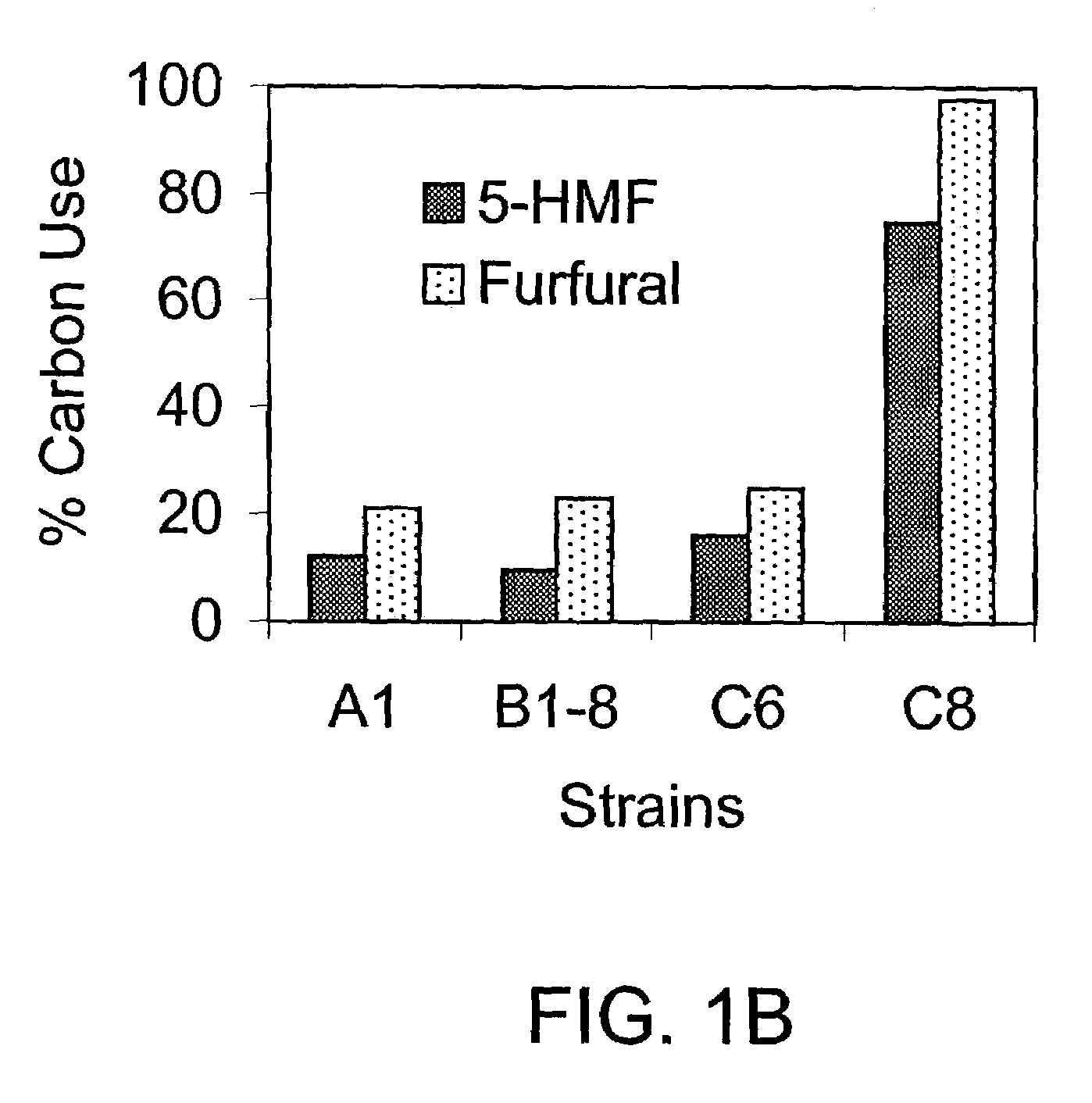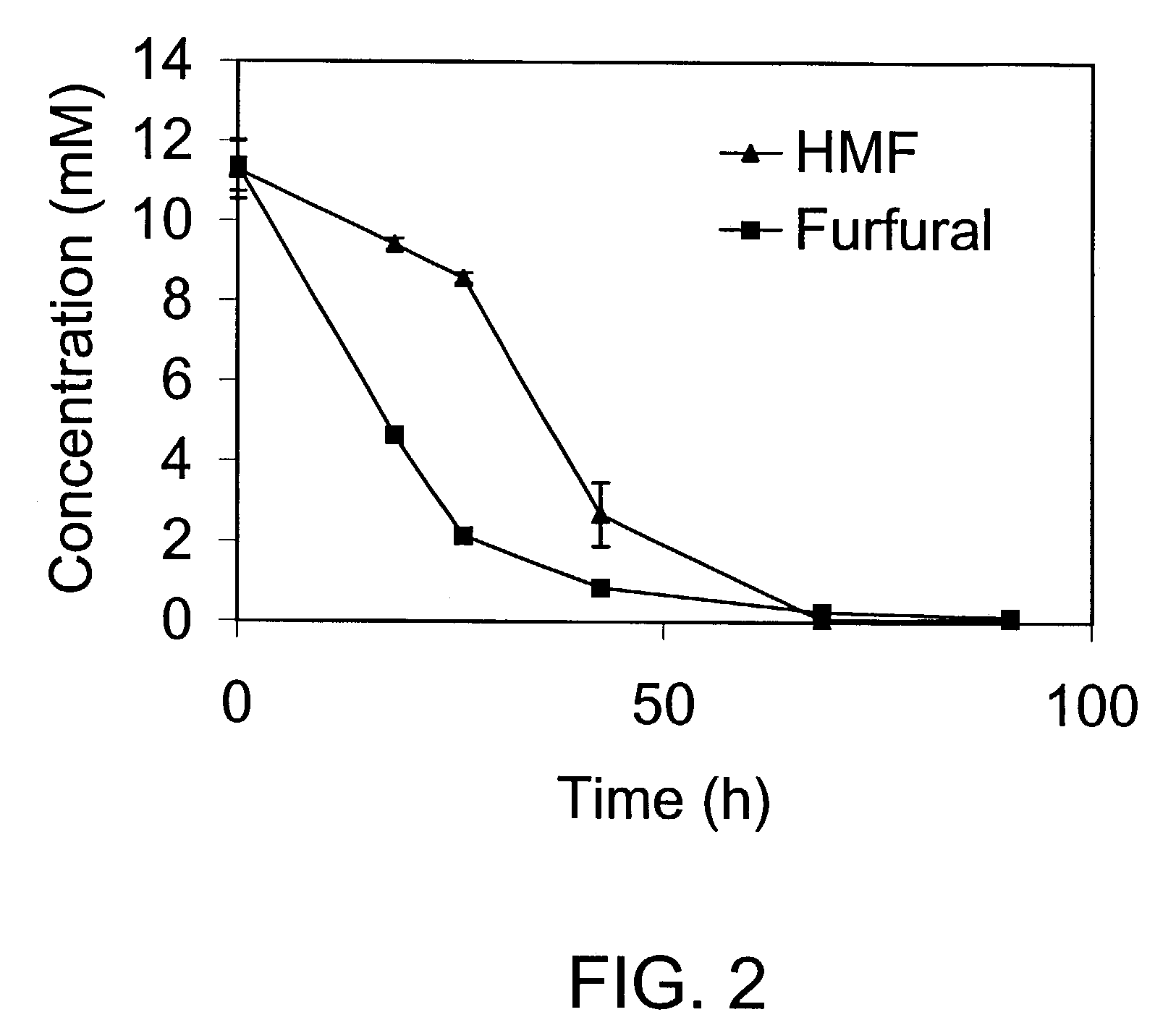Culture containing biomass acid hydrolysate and Coniochaeta ligniaria fungus
- Summary
- Abstract
- Description
- Claims
- Application Information
AI Technical Summary
Benefits of technology
Problems solved by technology
Method used
Image
Examples
example 1
Enrichment and isolation.
[0038]Microorganisms were isolated from soil samples obtained from the grounds of an industrial plant, in areas supposed to have a history of furfural contamination. Initial soil microbiota was analyzed by serial 10-fold dilutions in sterile saline solution (NaCl, 0.9% (w / v)) and plate counts on YPD medium and on MBM amended with 0.05% (w / v) of either ferulic acid, furfural, 5-HMF, or their mixture (MBM-0.05TM) with each compound at 0.05% (w / v) (ferulic acid, 2 mM, furfural, 5 mM, and 5-HMF, 4 mM).
[0039]Microorganism populations were selected by means of a two-step enrichment protocol. The first enrichment culture was performed in MBM-TM, which contained a “toxic mixture” of some of the main toxic compounds usually found in acid hydrolysates (ferulic acid, furfural, and 5-HMF). This enrichment was followed by an additional transfer into a complex medium composed of corn stover hydrolysate (CSH) containing (NH4)2SO4 as an added nitrogen source.
[0040]Five gram...
example 2
Detoxification in defined medium.
[0051]Further selection criteria in regard to the 12 selected isolates described in Example 1 involved the analysis of the depletion of toxic carbon sources from liquid media by the isolates. This analysis was performed in liquid media with either furfural (20 mM), 5-HMF (15 mM) or ferulic acid (10 mM), separately. The compounds were degraded at different rates for each strain. After 6 days, all 12 isolates degraded ferulic acid, seven isolates (A1, A6, B1—1, B1-9, C6, C7 and C8), depleted greater than 70% of 5-HMF and only two strains (B1-8 and C6) removed almost all of the furfural, when the compounds were supplied individually. Six of the twelve strains (C6, C8, B1-1, B1-8, A1 and A5) grew on the mixture of toxic compounds, based on optical densities measured in liquid media, and growth on solid media. Some of these six isolates did not grow on furans in media with such compounds as the single carbon source, but they were selected because of their...
PUM
 Login to View More
Login to View More Abstract
Description
Claims
Application Information
 Login to View More
Login to View More - R&D
- Intellectual Property
- Life Sciences
- Materials
- Tech Scout
- Unparalleled Data Quality
- Higher Quality Content
- 60% Fewer Hallucinations
Browse by: Latest US Patents, China's latest patents, Technical Efficacy Thesaurus, Application Domain, Technology Topic, Popular Technical Reports.
© 2025 PatSnap. All rights reserved.Legal|Privacy policy|Modern Slavery Act Transparency Statement|Sitemap|About US| Contact US: help@patsnap.com



